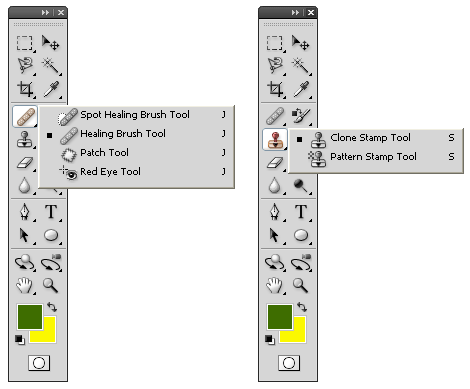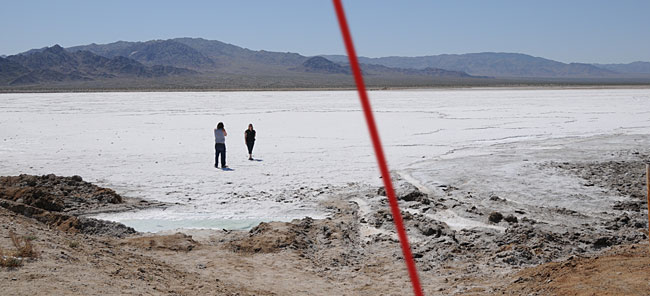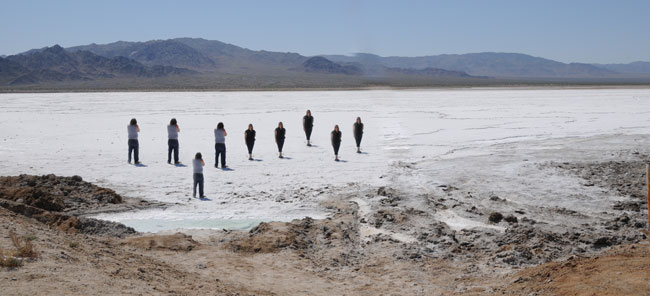1-7 : Introduction to Fixing ImagesIntro
Spot Healing Brush
Right-click on the image above and select Copy Image. In Photoshop start a new drawing and then paste (CTRL + V) the image into it. To fix the red line, you'll need to activate the Spot Healing Brush (J). Now that it's active you'll see a set of options available on the option bar. Once again, you should notice some familiar ones. Make the brush size just a bit larger than the red line.
You might remember that you can hold the shift key to draw a straight line. What you want to do is pick on a spot just above the red line, hold the shift key, and pick again just below the bottom of the line. You'll see a black line appear, then the healing will begin. You should see that the red line is gone and the image should much better, it's like magic! It might not be perfect, but it's a lot better. This is a very quick and easy way to fix parts of an image. Try some different settings, and see if you can improve on your first attempt. I find that the tool does a good job, but not a great job. It can be handy to get the job started with the Healing Brush, then clean it up with the Clone Stamp.
Clone Stamp Tool
Before we remove the people, we'll make a copy of one of them first. What you want to do first is ZOOM (magnifying glass icon on the toolbar, or hit the "Z" key) in on the people. Next, activate the Clone Stamp Tool ("S") and make it just a bit wider than the person on the left. Put the tool over the person while holding the Alt key, this will change the curser to a bulls eye. Left-click samples/copies the area you are using as the original. Now move the tool over to an area that is mostly white salt. Left-click and hold while dragging the mouse. You should see a clone of the person appear. You can clone as many as you like.
Just as you have cloned the people, you can remove them. Sample part of the white salt area, and then copy over the people. Bonus Practice - See if you can fix this image using the Clone tool. It will give you good practice at changing your tools size and figuring out how to select the best sample area. Tip - be careful not to create a repetitive pattern when cloning. When you select the sample area, it helps to make your target area parallel to the sample area.
Conclusion Reference Reference
|
|||
<< Previous Tutorial |
Return to List |
Next Tutorial >> |
|
Owned and operated by The Art Department, Chester, NE |
Last Update: |


